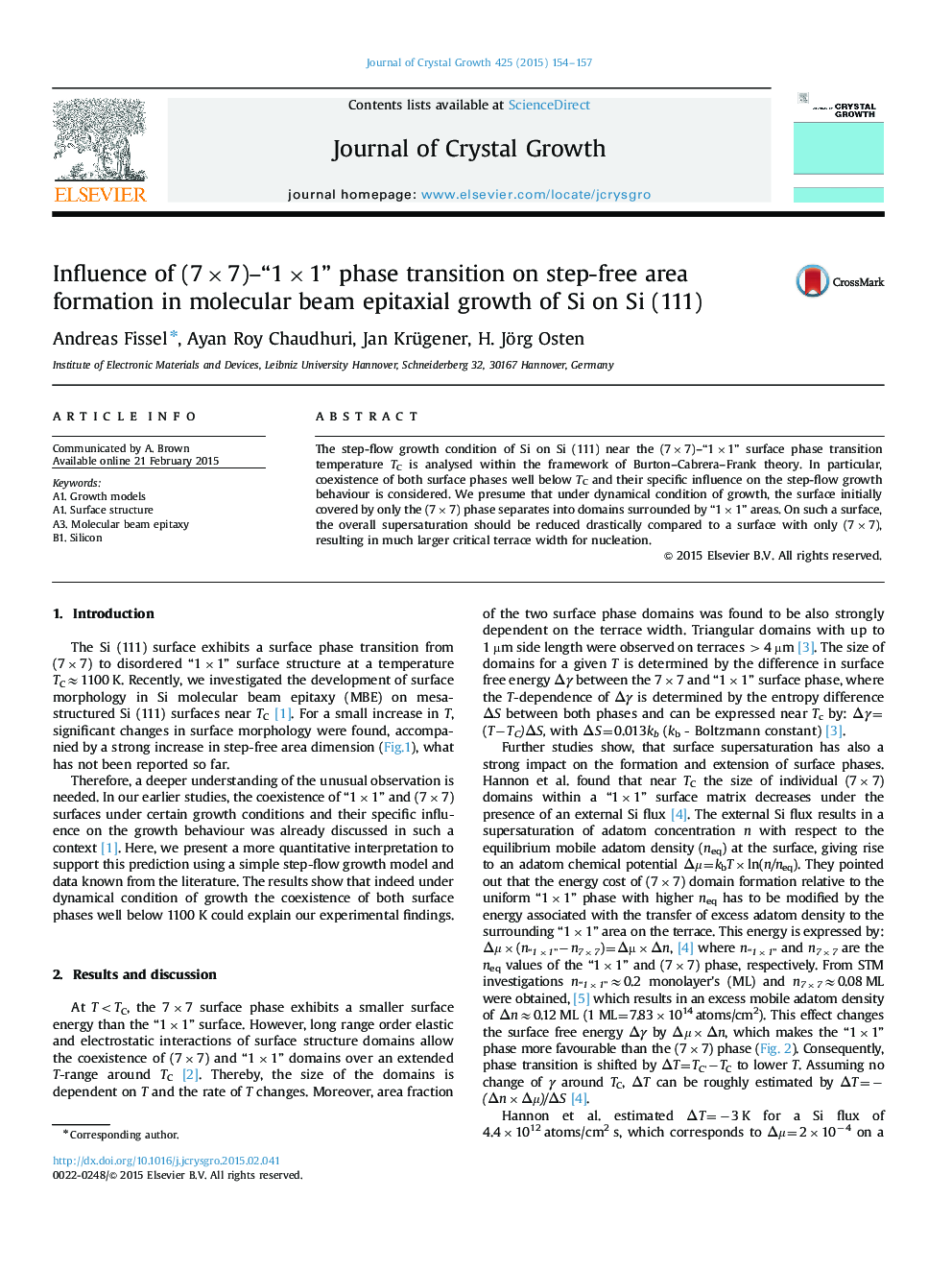| Article ID | Journal | Published Year | Pages | File Type |
|---|---|---|---|---|
| 8149769 | Journal of Crystal Growth | 2015 | 4 Pages |
Abstract
The step-flow growth condition of Si on Si (111) near the (7Ã7)-“1Ã1” surface phase transition temperature TC is analysed within the framework of Burton-Cabrera-Frank theory. In particular, coexistence of both surface phases well below TC and their specific influence on the step-flow growth behaviour is considered. We presume that under dynamical condition of growth, the surface initially covered by only the (7Ã7) phase separates into domains surrounded by “1Ã1” areas. On such a surface, the overall supersaturation should be reduced drastically compared to a surface with only (7Ã7), resulting in much larger critical terrace width for nucleation.
Related Topics
Physical Sciences and Engineering
Physics and Astronomy
Condensed Matter Physics
Authors
Andreas Fissel, Ayan Roy Chaudhuri, Jan Krügener, H. Jörg Osten,
